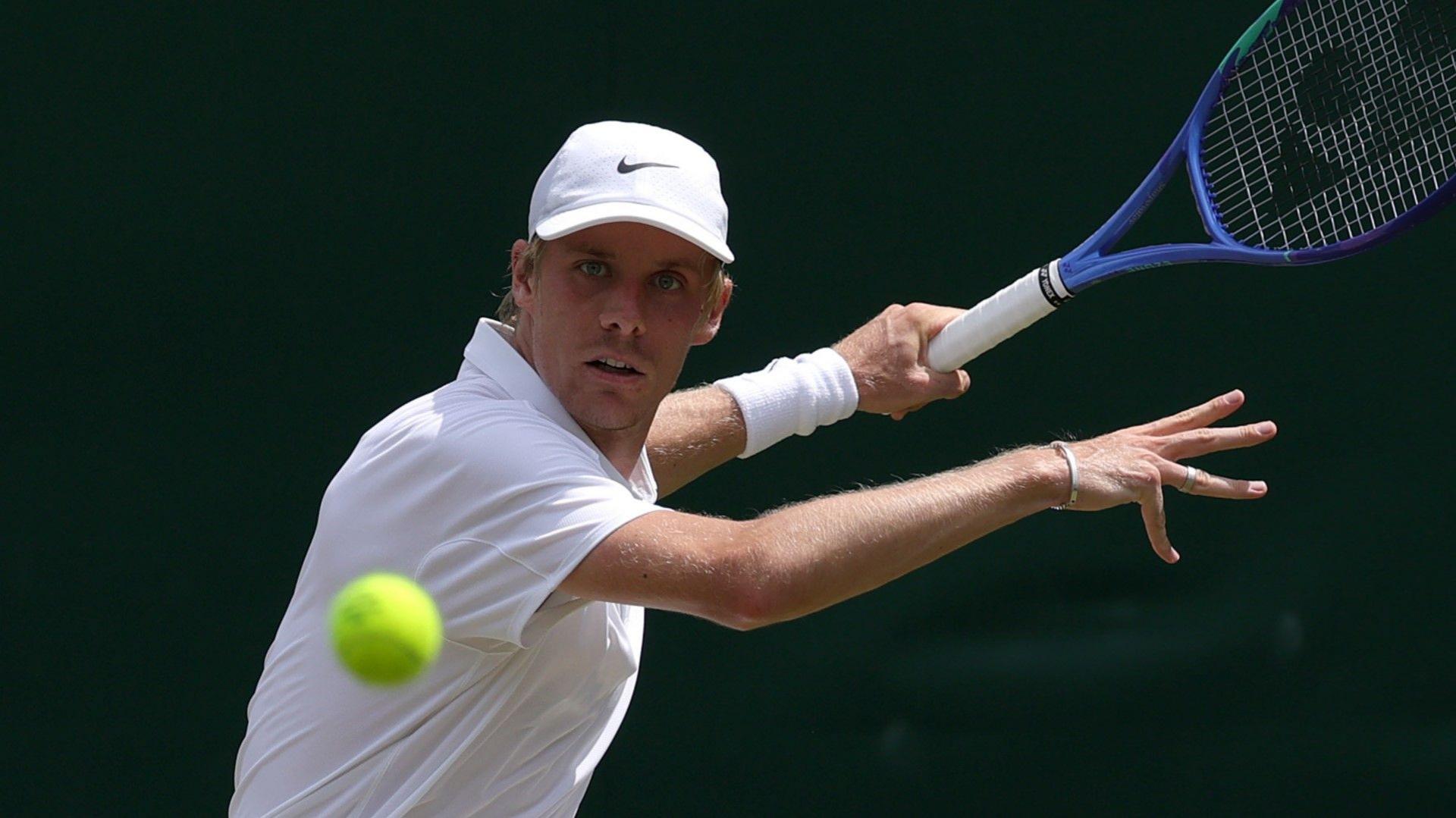Conditions have been tough for the players at Wimbledon, but for some it is not just the high temperatures making things difficult – it is also the grass they are playing on.
Several of those competing at the Grand Slam this week have said the balls are bouncing differently, while one player said it is like playing on clay – traditionally a much slower surface.
It has been an especially hot start to the tournament, with Monday setting a record for the warmest opening day when the temperature reached 32. 3C, while the mercury rose to 33. 4C on Tuesday, although rain arrived on Wednesday morning.
Wimbledon’s head groundsman Neil Stubley said the heat has contributed to slower courts but felt criticism of the ball’s bounce was unfair.
“One of the things we do extensively is consistency,” he told BBC Sport. “One of the things we always try and always do is make sure our ball bounce and ball speed is very consistent.
“I think you probably will see the ball a little slower and I think the reason for that is probably where the [grass] leaf is drying out a bit more, the ball is gripping the leaf a little bit more.
“You and I, we might not notice that but when you are a top athlete you will see those nuances where the ball may feel like it is coming in slower and it is just allowing that 10th of a second for a player to be able to adapt.
“Everything we are a looking at, the consistency, I think we are in a good place. “
Defending women’s champion Barbora Krejcikova voiced her thoughts on the surface after battling back to win her opening match against Alexandra Eala on Tuesday.
“There’s not enough water, and it gets really, really yellow, very, very fast,” she said.
‘This isn’t grass any more’ – what have players said?
Canadian Denis Shapovalov, the number 27 seed at Wimbledon, was knocked out by Argentina’s Mariano Navone in the first round.
He was broken six times by his opponent as he suffered his earliest exit at the tournament since 2019.
“The balls are the worst, the grass tour has turned into a joke,” he said after his defeat.
“This isn’t grass any more, the court is slower than a clay one. It’s not even grass. “
Two-time champion Petra Kvitova said things had changed over the years.
“I’m not sure if it’s only grass,” she said. “Maybe it’s the balls, as well. Overall it’s getting slower. “
Eight top-10 seeded players have exited in the first round – the highest tally at a single Grand Slam event in the Open era.
Among those to be knocked out was American third seed Jessica Pegula, who said the courts at Wimbledon “felt different” but added: “That’s grass – they’re all kind of different. It’s a living surface, they’re not going to play the same. “
Poland’s former world number one Iga Swiatek feels the Wimbledon courts are playing slower and the “ball bounced differently” in the heat but expects things to change.
Wimbledon 2025
What is the effect of slower courts?
Slower courts lead to longer rallies as players have more time on the ball.
It can therefore also lead to longer matches, which can be more physically draining for players.
Former doubles player Dom Inglot told BBC Sport that courts had been getting slower since 2001. Before that, you would see players hitting serve and volley predominantly rather than the long baseline rallies you more often see now.
He believes part of the change is down to Wimbledon wanting to make the courts more aesthetically appealing after years where the courts looked very worn by the second week, while also wanting to deliver a better spectacle for fans.
“The idea was Wimbledon had to compete with the great rallies you were seeing at the Australian Open, US Open, French Open,” he said.
“Serve and volley all the time was getting a bit mundane so they wanted more rallies and so there was discussion of do you change balls, do you change the court and I think they went with both. “
A slower surface means players need to adapt their tactics.
“It was ridiculous to think you could hit a kick serve that would jump off the surface like a kick works on clay or hard courts – that was not imaginable 10 years ago, now kick is working,” Inglot said.
What type of grass is used at Wimbledon?

Since 2001, the Wimbledon grass is comprised of perennial ryegrass, which is said to have the durability and strength to withstand the wear of the modern game.
Groundsman Stubley said this type of grass has provided more consistency, adding: “Players are confident they know where the ball will bounce.
“In the old days of serve and volley, where the players didn’t realise what was going to happen, they didn’t want long rallies because they were not confident of where the ball would bounce. “
Wimbledon’s official website says a number of factors affect the speed of a court which include the compacting of the soil over time, as well as the weather before and during the event.
Warm and dry days should make a ball lighter and faster, while cold and damp days would make it seem heavier and slower.
The soil, it says, largely determines the bounce of ball, not the grass.
There have been no changes to the specification of the ball since 1995, when there was a very minimal alteration in compression.
Related topics
- Tennis
Source: BBC

Leave a Reply